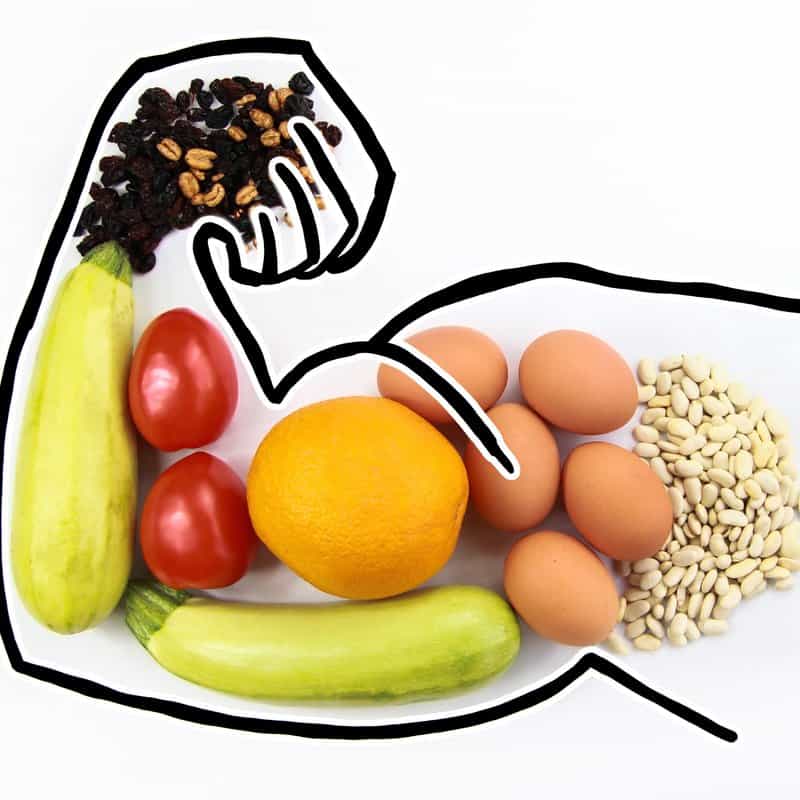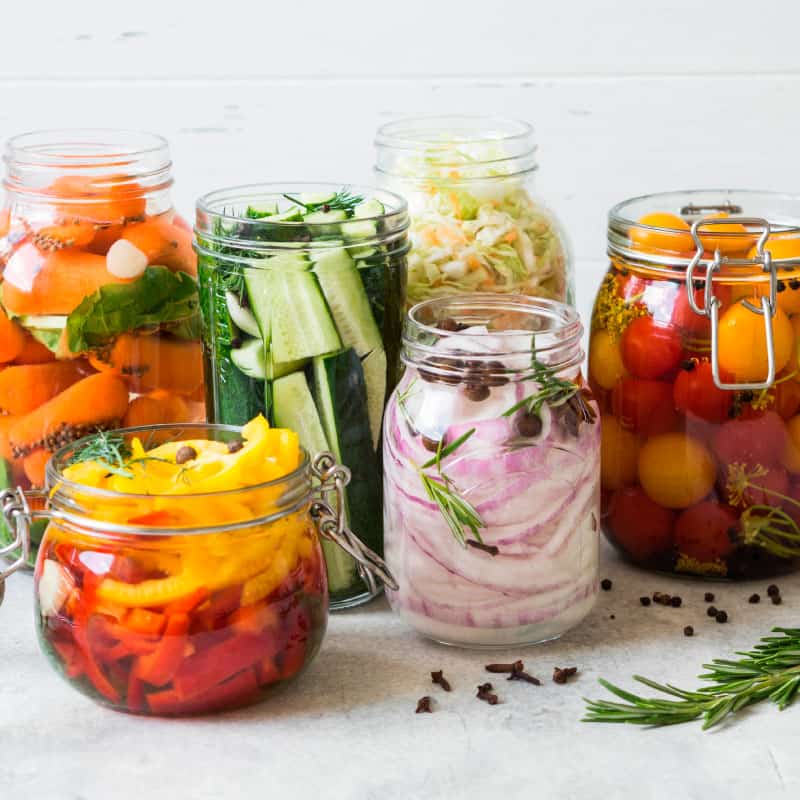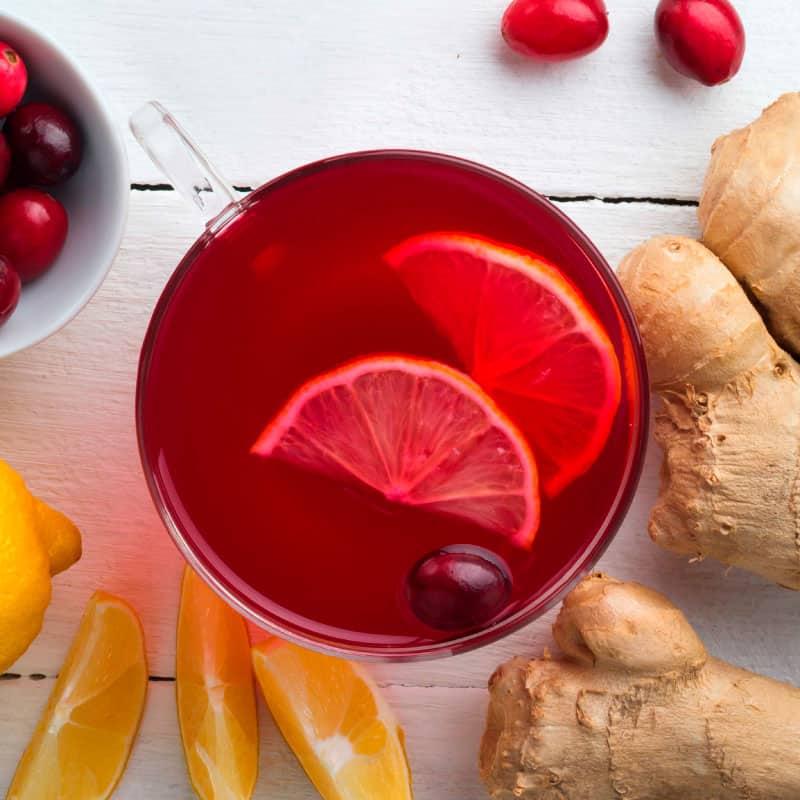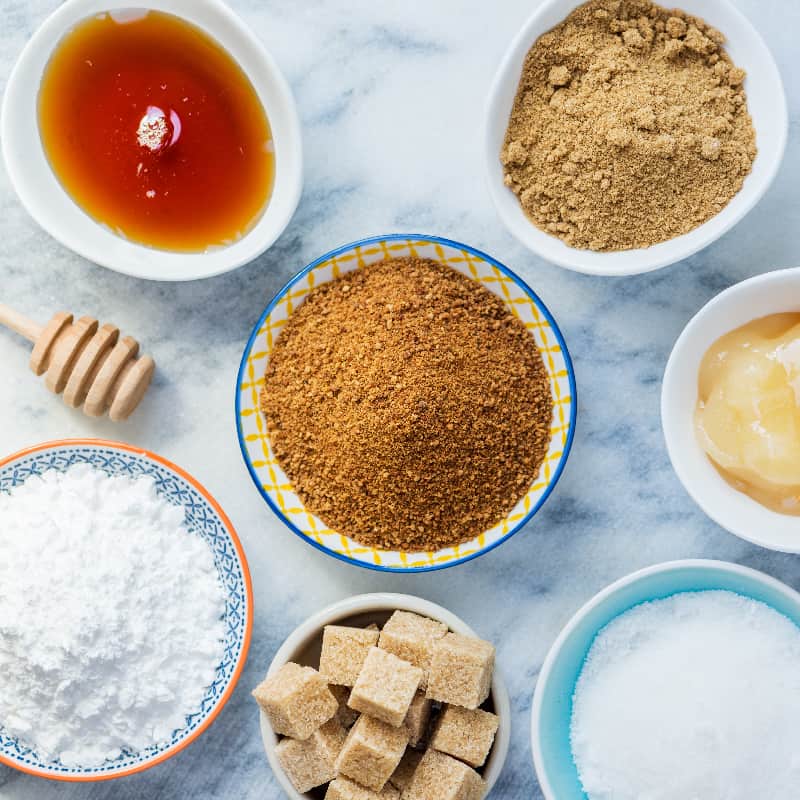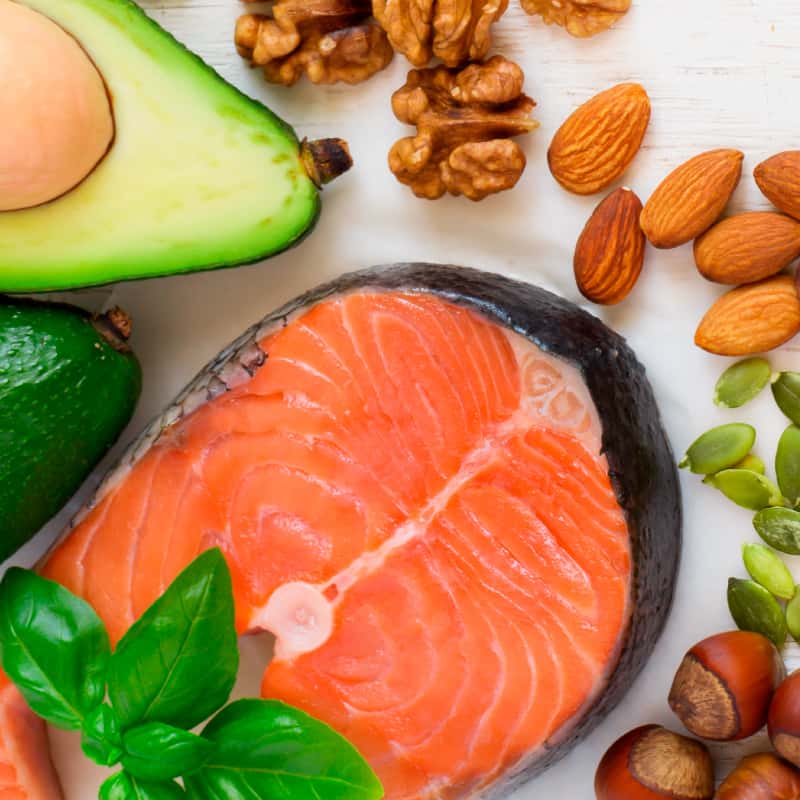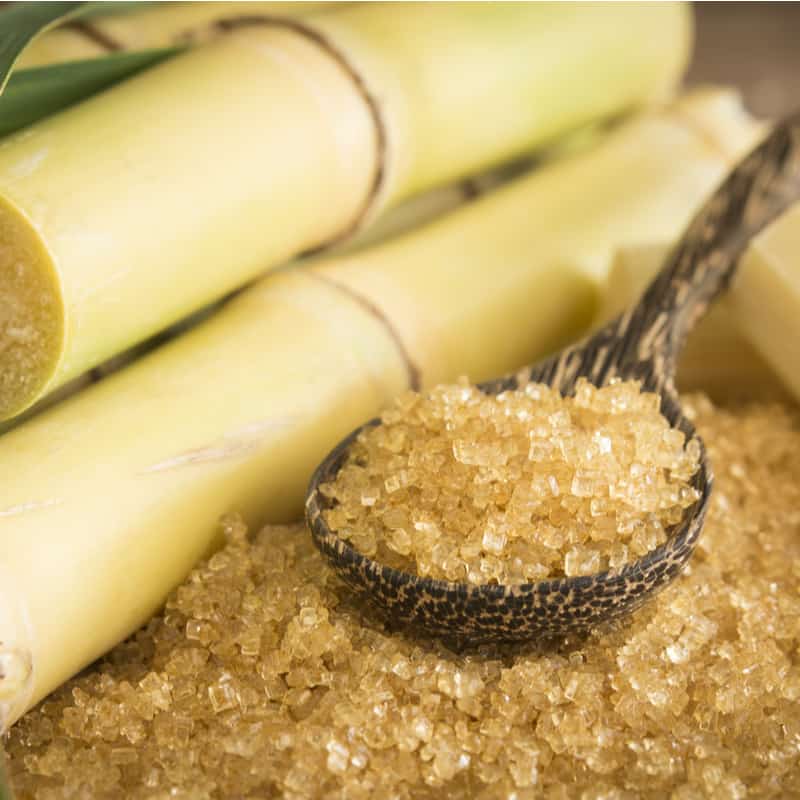This Dr. Axe content is medically reviewed or fact checked to ensure factually accurate information.
With strict editorial sourcing guidelines, we only link to academic research institutions, reputable media sites and, when research is available, medically peer-reviewed studies. Note that the numbers in parentheses (1, 2, etc.) are clickable links to these studies.
The information in our articles is NOT intended to replace a one-on-one relationship with a qualified health care professional and is not intended as medical advice.
This article is based on scientific evidence, written by experts and fact checked by our trained editorial staff. Note that the numbers in parentheses (1, 2, etc.) are clickable links to medically peer-reviewed studies.
Our team includes licensed nutritionists and dietitians, certified health education specialists, as well as certified strength and conditioning specialists, personal trainers and corrective exercise specialists. Our team aims to be not only thorough with its research, but also objective and unbiased.
The information in our articles is NOT intended to replace a one-on-one relationship with a qualified health care professional and is not intended as medical advice.
July Produce: What’s in Season and How to Use It
July 6, 2025
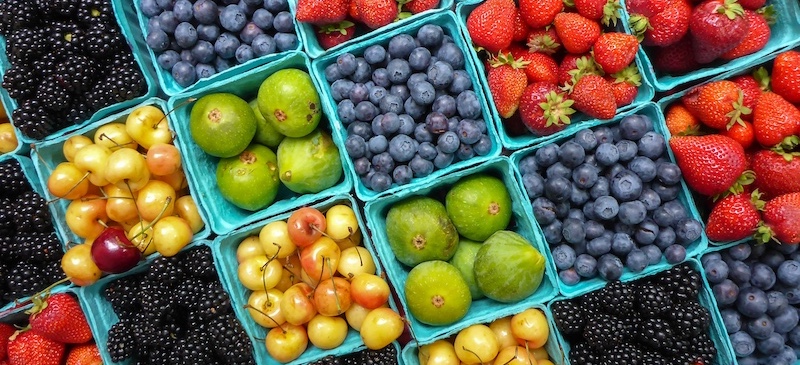
July is a peak month for fresh, flavorful produce. With long sunny days and warm weather, summer crops are bursting with color and taste. From juicy fruits to crisp vegetables, July produce offers a vibrant mix of seasonal favorites that are packed with nutrients and perfect for summer meals.
Eating with the seasons not only helps support local farms and reduce your carbon footprint, but it also ensures you’re getting the freshest and most nutrient-dense foods available.
In this guide, we’ll explore what produce is in season in July, the health benefits of some delicious July fruits and vegetables, and simple ways to use July produce in everyday recipes.
What produce is in season in July?
July produce is full of summer fruits and summer vegetables, and many of them are some of the top hydrating foods, perfect for this time of year.
Here are 20 fruits and vegetables at their peak in July, along with their nutritional benefits:
1. Zucchini
Rich in vitamin C, potassium and antioxidants, zucchini supports immune health and healthy digestion. It’s also low in calories and high in water content. This summer squash also is high in fiber and a source of vitamin B6, further supporting immune function and heart health.
How to use: Spiralize into “zoodles,” grill with olive oil or bake into muffins.
2. Tomatoes
Tomatoes are high in lycopene, a powerful antioxidant linked to heart health. In fact, research has shown lycopene may reduce the risk of heart disease and certain cancers.
They’re also packed with vitamin C, potassium and folate.
How to use: Slice for salads, roast for sauces or blend into gazpacho.
3. Blueberries
Packed with antioxidants, blueberries support brain health and reduce inflammation. These antioxidant powerhouses contain anthocyanins that protect cells from oxidative stress.
They also offer vitamin C, vitamin K and fiber.
How to use: Add to yogurt, oatmeal or bake into healthy desserts.
4. Corn
Fresh sweet corn provides fiber for digestive health, B vitamins for energy, and antioxidants like lutein and zeaxanthin that support eye health.
How to use: Grill on the cob, add to summer salads or make corn salsa.
5. Blackberries
High in vitamin C, vitamin K and manganese, blackberries aid immune function, collagen production and bone health. They also offer a healthy dose of fiber and polyphenols.
How to use: Toss into smoothies, bake into crisps or enjoy fresh.
6. Cucumbers
Cool and refreshing, cucumbers contain vitamin K and antioxidants that help boost skin and digestive health. They also contain silica, which benefits the skin and joints.
Made up of about 95 percent water, cucumbers help keep you hydrated.
How to use: Slice into salads, infuse in cucumber water or blend into chilled cucumber soup.
7. Peaches
Peaches are a juicy source of vitamin A (as beta-carotene), vitamin C and fiber. They’re great for skin health and digestion.
They also contain potassium, which supports blood pressure regulation.
How to use: Grill with honey, add to yogurt or blend into smoothies.
8. Eggplant
Eggplant provides potassium and antioxidants like nasunin, which supports brain health. It’s also high in fiber and manganese.
How to use: Roast, grill, or use in dishes like eggplant parmesan or baba ganoush.
9. Plums
Plums are rich in antioxidants like polyphenols and offer vitamin C and potassium. They help support digestion, bone health and blood sugar control. Plums also help reduce inflammation and support heart health.
How to use: Eat fresh, slice into salads or simmer into chutney.
10. Bell peppers
Loaded with vitamin C (more than an orange!), bell peppers, especially red and yellow varieties, promote immune function and eye health. They’re also rich in beta-carotene and other antioxidants.
How to use: Stuff bell peppers with quinoa, add to fajitas or slice raw for dipping.
11. Raspberries
Raspberries are among the highest-fiber fruits and provide vitamin C, manganese and powerful antioxidants that fight inflammation. These berries also help with digestion and cellular health.
How to use: Stir into oatmeal, blend into dressings or enjoy with dark chocolate.
12. Green beans
Green beans are a great source of vitamin K, folate and fiber. They support heart health and help maintain strong bones.
How to use: Steam, sauté with garlic or add to stir-fries.
13. Apricots
Apricots are rich in vitamin A, vitamin C and potassium, making them good for eye and skin health. These stone fruits are rich in antioxidants like beta-carotene, as well.
How to use: Slice into salads, grill or snack on dried versions without added sugar.
14. Summer squash
Summer squash varieties like yellow squash are light, hydrating, and high in vitamin C and manganese. They’re easy to digest and enhance immune function.
These veggies are low in calories and rich in vitamin A and fiber as well. Zucchini is a type of summer squash.
How to use: Stir-fry, grill or bake into casseroles.
15. Cherries
Cherries are anti-inflammatory and contain anthocyanins that help reduce inflammation and may aid in muscle recovery. They’re also one of the few food sources of natural melatonin, which supports better sleep.
How to use: Eat fresh, bake into pies or add to grain salads.
16. Okra
Okra is a unique vegetable rich in mucilage (a gel-like fiber) that supports gut health. It’s also a good source of vitamin C, folate and magnesium.
As such, okra is used to help with digestive and prenatal health.
How to use: Add to soups, stews, or sauté with garlic and spices.
17. Watermelon
This hydrating fruit is about 92 percent water and contains electrolytes and the antioxidant lycopene. Watermelon is also high in vitamins A and C.
How to use: Cube for fruit salads, blend into juice or freeze into popsicles.
18. Strawberries
Rich in vitamin C and manganese, strawberries are great for immunity and skin health. They’re high in folate and flavonoids, which help fight inflammation and support heart health.
How to use: Slice over oatmeal, dip in dark chocolate or toss into salads.
19. Beets
Beets contain nitrates that support healthy blood pressure and blood flow. They also provide folate, fiber and antioxidants like betalains.
How to use: Roast, blend into smoothies or grate raw into slaws.
20. Cantaloupe
This melon is packed with vitamin C, vitamin A and water for hydration and immune support. Cantaloupe also protects healthy skin.
How to use: Cube for snacks, blend into smoothies or pair with prosciutto for a sweet-savory appetizer.
Best July fruits and vegetables
What fruit is in season in July? Here are some of the freshest July fruits:
- Apricots
- Avocado
- Banana
- Blackberries
- Blueberries
- Cantaloupe
- Cherries
- Currants
- Figs
- Grapes
- Honeydew
- Lemons
- Limes
- Mango
- Nectarines
- Papaya
- Peaches
- Pineapple
- Pineberries
- Plums
- Raspberries
- Strawberries
- Valencia oranges
- Watermelon
What vegetables are in season in July? These are some of the top July vegetables to eat:
- Beets
- Bell peppers
- Bok choy
- Broccoli
- Cabbage
- Carrots
- Cauliflower
- Celery
- Cucumbers
- Eggplant
- Green beans
- Hot peppers
- Leafy greens (kale, spinach, Swiss chard, lettuces)
- Leeks
- Lettuce
- Mushrooms
- Okra
- Onions
- Peas
- Potatoes
- Radish
- Rhubarb (end of season)
- Summer squash/zucchini
- Sweet corn
- Sweet potato
- Tomatoes
How to use July produce
Fresh July produce is incredibly versatile. Here are some easy ways to enjoy it:
- Salads: Toss cucumbers, tomatoes, bell peppers or green beans into leafy green salads. Add berries or sliced peaches for sweetness.
- Grilled dishes: Zucchini, eggplant, corn and bell peppers are excellent on the grill. Lightly season, and serve as a side or main dish.
- Smoothies: Blend berries, watermelon or cantaloupe with a splash of plant-based milk or yogurt for a refreshing drink.
- Salsas and dips: Use tomatoes, cucumbers and peppers to make fresh salsa or tzatziki.
- Baking: Use berries or stone fruits like peaches and plums in crisps, muffins or pies.
- Soups and stews: Tomatoes, okra, zucchini and squash are excellent in summer vegetable soups or ratatouille.
- Snacking: Enjoy fresh fruit as a snack, or serve with nut butter or a sprinkle of cinnamon for added flavor.
Here are some recipes that utilize July produce to try:
- Sweet Beet Juice
- Cold Summer Soup
- Pickled Beets
- Secret Cucumber Detox Soup
- Strawberry Lemonade
- Chilled Avocado and Zucchini Soup
- Watermelon Feta Salad
- Roasted Beets with Balsamic Rosemary Glaze
- Watermelon Salad with Rosemary & Yogurt
- Peachy Super Kale Shake
- Beef and Quinoa Stuffed Bell Peppers
- Lemon Garlic Green Beans
- Watermelon Agua Fresca
- Strawberry Banana Smoothie
- Hydrating Watermelon Smoothie with Strawberries and Banana
- Strawberry Bread
Conclusion
- July produce is abundant, flavorful and bursting with nutrition.
- Whether you’re visiting a local farmers market or harvesting from your own garden, take advantage of the season’s best fruits and vegetables.
- Not only will you support your health, but you’ll also enjoy the freshest flavors summer has to offer with the freshest July produce.
- Make the most of this sunny season by incorporating these vibrant July seasonal produce foods into your meals, and let July’s harvest inspire your next kitchen creation.



